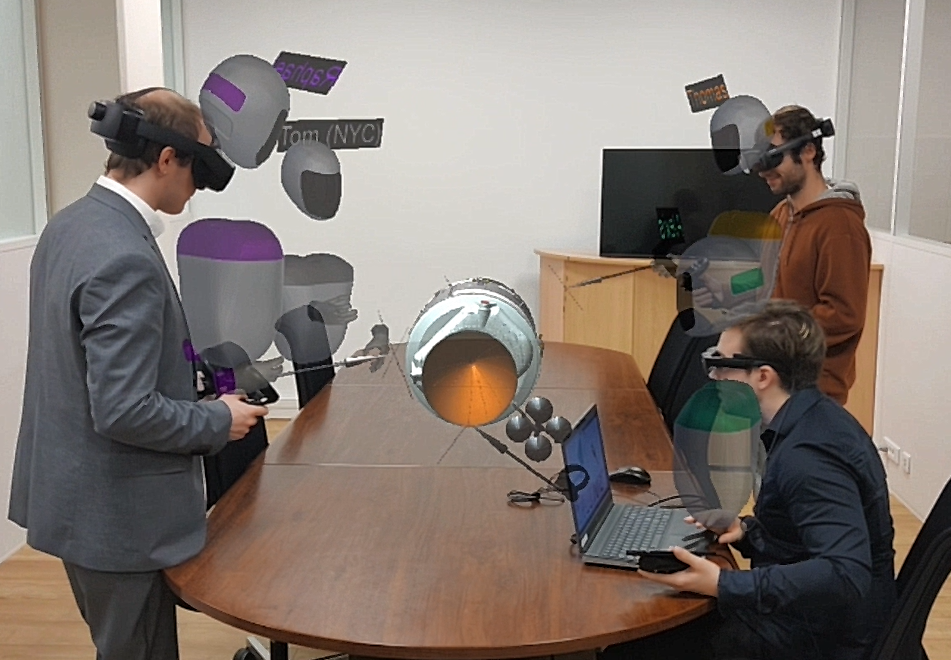
With its software solution, TechViz has revolutionized collaborative virtual reality for engineers.
Crédits photos : Capterra
TechViz is a virtual reality software editor. It provides immersive 3D visualization solutions, particularly for collaborative projects. The company’s products and services are aimed at industrial clients in all sectors of activity. TechViz will be exhibiting at Laval Virtual on April 10-12, 2024, on stand B31. Interview with Alexis Vartanian, Founder and Chief Technical Officer.
Can you introduce your company?
TechViz is a software developer of immersive visualization solutions for professionals. Our technology can display any 3D model in Virtual Reality without data conversion. TechViz, founded in 2004, is celebrating its 20th anniversary this year, with just fewer participations at Laval Virtual! Our technology has been adopted by many industrial players, as it increasingly meets their current challenges: ease of implementation, data security and integrity, remote collaboration… Our experience allows us to focus on items with high added value for our customers.
What will your company show at Laval Virtual 2024?
At this year’s event, TechViz and its partners will be showcasing the latest innovations in professional XR. It seems to us that this year’s main focus is mixed reality. The new headsets now on the market enable realistic integration of digital and real content. Combined with the latest TechViz innovations, it means we can present new use cases: for example, collaborative meetings with co-localized users, who can conduct a project review in VR while keeping all non-verbal communication channels open (gestures, facial expression…).
What is your company’s current innovation?
We have just launched an immersive teleconferencing service in Japan with NTT Docomo, the archipelago’s main telecom operator. It’s a service that connects participants to a meeting where the organizer can share an immersive 3D model. In a way, it’s the Teams or Zoom of virtual reality. The meeting organizer opens the model in his native application, and all participants can navigate freely in the virtual scene thanks to remote rendering calculated in Cloud servers. This is a source of great pride for TechViz: on the one hand, it’s a real technological achievement to have succeeded in bringing this solution to market. It kept our R&D teams busy in 2023! Secondly, we’re honored that a major company like NTT Docomo has put its trust in TechViz to provide them with the core software for this service. Knowing the Japanese demand for quality, nothing was left to chance in the development of this product!
What innovation do you think has most transformed the world of VR/AR?
It all depends on how far back you go! From our point of view, the major innovation of recent years has been remote rendering. By eliminating the physical link between the computing machine and the visualization system, this has led to the real development of mobile and collaborative VR/AR: with 5G or WIFI, it’s now possible to have a technician working with AR glasses on a machine on a production line collaborate with the design office located several hundred kilometers away, or to have an architect’s office show a future building to his client, wherever he may be.
The baseline of our 26th edition is “Act For The Future”. In your opinion, how can immersive technologies impact the world of tomorrow?
Reaching the 20-year milestone was an opportunity for TechViz to look ahead and reflect on the future of immersive technologies. In our field, which is R&D, it’s clear that they have an important role to play in moving towards a greener industry, via product and process eco-design. They have a direct impact: virtual prototyping and collaboration can save many resources: materials for prototypes, travel, etc. But they will also have an indirect effect when used in combination with other innovations: for example, we can see that generative Artificial Intelligence is making its appearance in CAD software, and immersive visualization solutions, particularly those operating without data conversion such as TechViz, are essential for selecting and validating the multiple variants proposed by AI.



